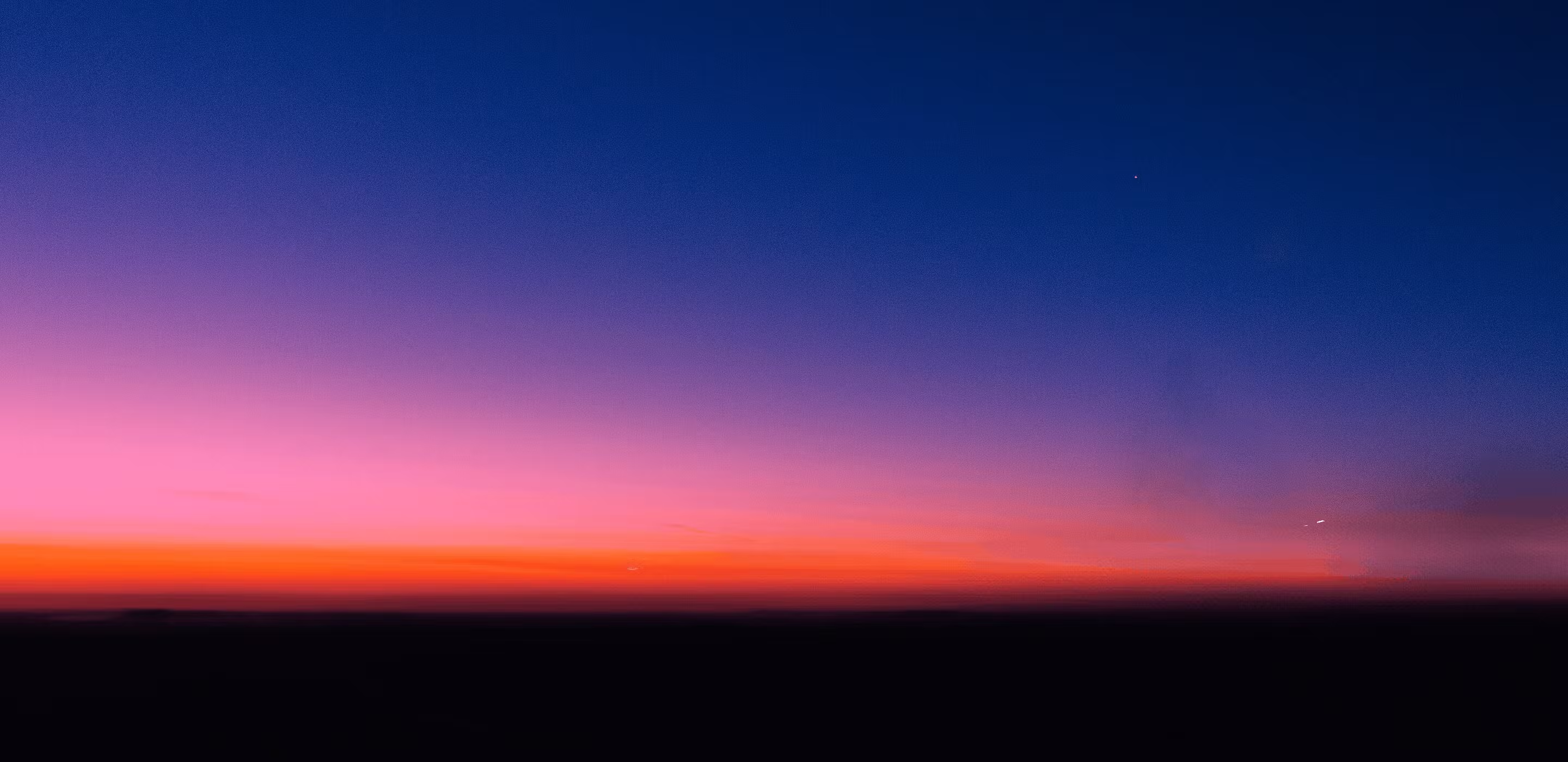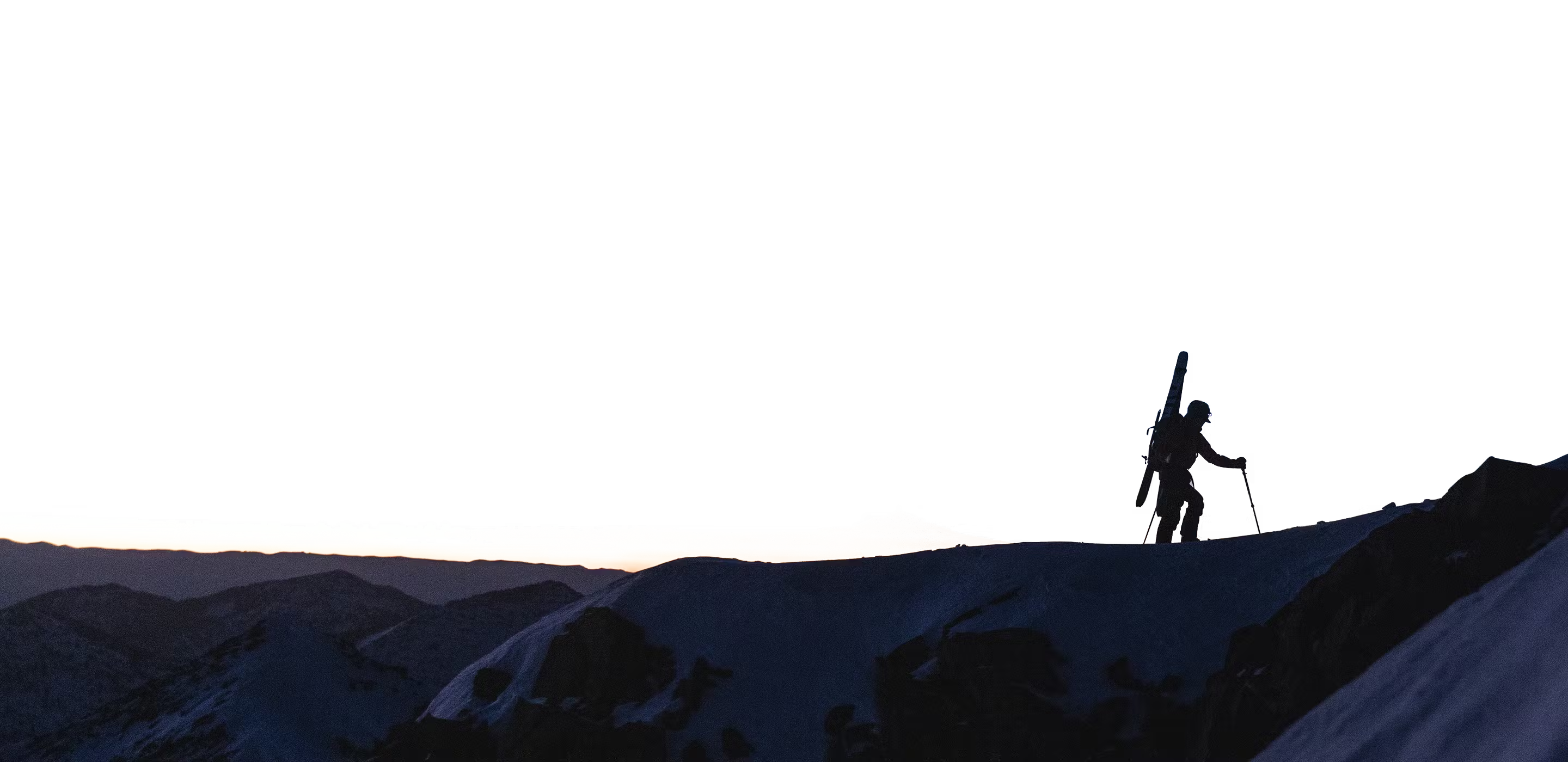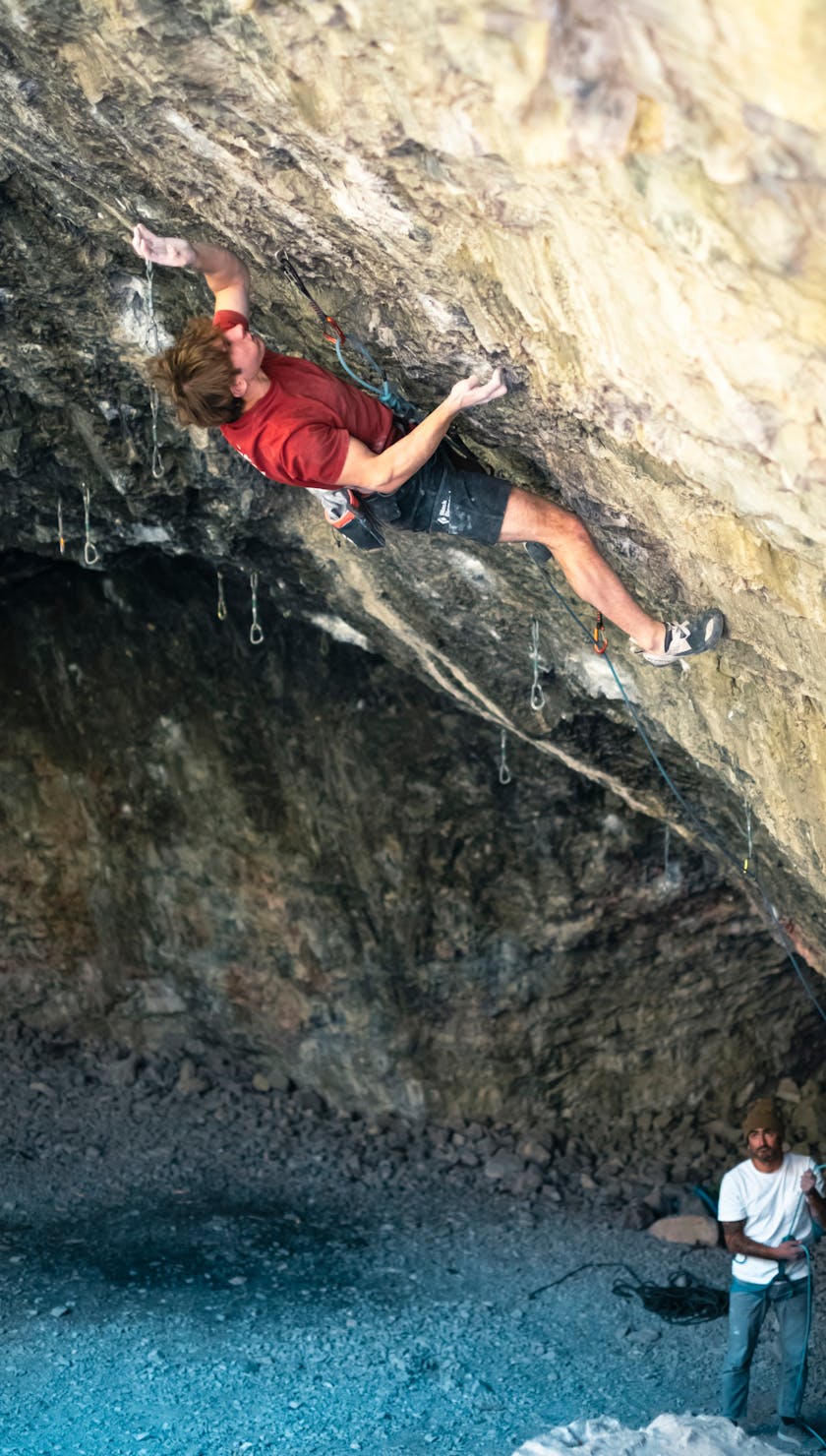“There’s a caretaking that needs to happen now with old routes,” explains BD athlete Sam Elias.
And that’s where this story begins. But what transpires in this four-part series by Sam and documentary filmmaker Mike Call goes deeper than the new bolts drilled into stone. Through the resurrection of classic, historic routes, a meaningful, impactful connection is made between old and new generations. This is RetroModern, a series breathing new life into the storied past and bright future of climbing.
Black Diamond Presents: RetroModern—Part 3: Ice Cream
Video: Mike Call
Part 3: Ice Cream
Words: Sam Elias
American Fork (AF) canyon is a quick escape out of the bustle of the city. It’s a pretty big canyon of limestone with crags strewn on the mountain slopes on both sides. Despite the canyon being impressive as a whole, the crags themselves are small and they generally have shorter routes. The walls and individual climbs aren’t beautiful per se, but the quality of the movement and the effort required to climb well there, make up for it. This place has taught me as much as any, and I vividly remember the early struggles I had there upon first moving to town in mid 2013. The place makes you earn its enjoyment.

My relationship with AF comes mostly by way of “Hell,” which is really the formal Hell Cave, Hell Wall and the Diablo Wall. It took me a couple years to adapt to the style having spent the majority of my time on longer, more endurance-oriented climbing in places like the Red River Gorge and Rifle. I got slapped around and I struggled for a while, but I tend to be curious about things that are difficult and/or that I’m “bad” at. I steadily learned the subtleties. I got stronger, and I slowly worked my way through almost all of the routes there over the years, even adding a couple first ascents. In 2020, I helped with a group effort to replace nearly every bolt at the area with stainless steel glue-in bolts. I’ll never forget that season. I was up there so many days, often finishing and walking out in the dark.
Hell has a distinctly important place in American climbing history. Coinciding with the first international climbing competitions ever in the United States, in 1988 and 1989 the best climbers in the world showed up to compete at Snowbird, Utah, and then climb in American Fork. It was then that the routes Burning and Cannibals were first ascended in the Hell Cave. That gave AF some of the hardest climbs in the country at the time. Furthermore, that moment sort of opened the door and helped everyone realize that very steep, cave style rock could/should be bolted and climbed. The years after saw a lot of steeper rock being developed in the US and in Europe. Boone Speed sent Ice Cream in 1997. It was the 3rd 5.14c in the United States and the 2nd one done by an American, and it cemented AF as one of the most important hard sport climbing areas in the country at the time. But that might have been the height of importance for AF, because not only was bouldering gaining popularity, but also sport climbing was shifting to longer, more endurance-oriented routes. AF got left behind in this broadening of style.
Ice Cream itself has a bit of an interesting history. It was climbed just a few times after Boone, but then a hold broke and it sat for over 15 years, rumored to be unclimbable. It didn’t get re-bolted in 2020 for this reason. It wasn’t until after the hold was repaired that people started trying it again, and it saw a recent ascent in 2022. Thus, inspiring the effort to update the hardware like everything else at the crag.
Colin Duffy Climbing Ice Cream (5.14c) in American Fork Canyon, UT.
Photo: Boone Speed
Part 2: Blood Meridian
Words: Sam Elias
Ibex feels like another world, a different planet. It is special to me because of the juxtaposition of the salt flats with the rock walls. It’s an unlikely place that just feels like it shouldn’t be there. It’s paradoxical. It makes me feel smallness, but also vastness in the way the salt flat stretches way out to meet the sky, and then the sky stretches out further, seemingly forever looking in one direction. Looking in another direction, it’s the way the single horizon line is violently broken by the infinite vertical lines of the rock walls.

Black Diamond Presents: RetroModern
Part 2: Blood Meridian
Video: Mike Call
The rock is bizarre. It’s beautiful, high-quality quartzite. Solid white and light tan in areas. Solid burnt orange and brick red in others. Most striking when the color is streaking down the white tan. It’s very polished and slippery feeling, like marble, and it’s the hardest stone that I’ve ever drilled. It’s so exceptionally solid, perhaps even the best rock I’ve experienced. It requires thoughtful, intricate movements to climb. The whole formation is broken up in an interesting way and there are awesome boulders at the base, and single pitch routes scattered around, and multi pitch routes on the bigger walls. I haven’t climbed a lot out there, but it represents some of the wildest kind of crags. Primitive camping very near to climbing, but hours away from civilization. At night, Ibex is on par with the darkest places on earth. The night sky is the most spectacular version of itself. The sun can be fierce at certain times of the years, the cold at other times, the wind at any time. Staying out in these places for extended periods helps me reframe myself in the scope of things.
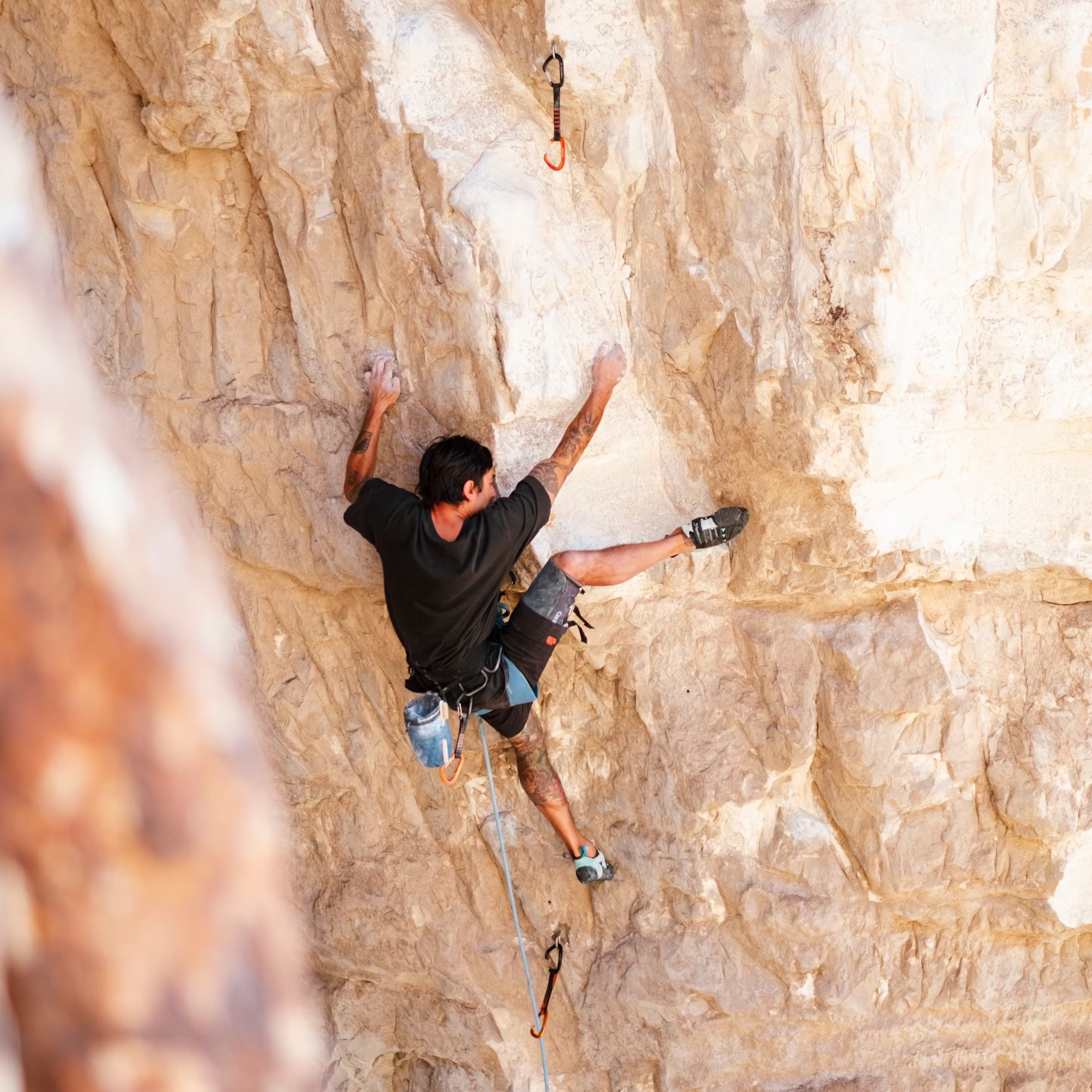
I wanted this whole project to highlight different places and different people, but to feel real and relatable. I had been living in Salt Lake City, Utah, for 10 years. Most people know that the state is special, but there are different reasons for why a place is special from a local, home perspective versus from an international, visitor perspective. None of the specific areas in this series are international destinations necessarily, however they all have been very special to me personally, and they are important to the story of climbing in Utah. Beyond that, they represent a broader reality — there is beauty and value and worth — everywhere. You don’t need to go somewhere “else.” There are places and people right in front of you, right now that can enrich your life.
Ibex, UT
Photo: Boone Speed
Part 1: Kintsugi
Words: Sam Elias
RetroModern is about connection and effort. I think it’s important to cultivate time and place and share work with people from a range of ages, experiences, backgrounds, and ability levels. It does not necessarily happen on its own. It takes intent and effort to remove ourselves from our echo chambers. Regardless of if Noah or Morgan, Colin or Timmy decides to bolt or re-bolt rock routes in the future — our time together was real and meaningful, and these stories matter. These stories represent mindful action, and they connect to a multigenerational flow of knowledge and of personal growth. I believe we are supposed to be seeking this in our lives: Learning. Growing. Teaching.
Black Diamond Presents: RetroModern
Part 1: Kintsugi
Video: Mike Call
RetroModern Part 1: Kintsugi
Maple Canyon is a very special maze of rock. It’s an unlikely and enchanting place, and it takes on a distinct personality with each season of the year. It’s like a cobblestone riverbed that got pushed up vertically and then turned into a labyrinth. By going from start to finish, you arrive on the very top of everything — able to see the whole of the canyon, and also the surrounding wide landscape.
I have been climbing there for a long time, since even before moving to Salt Lake City in 2013. I have had a lot of relaxed, casual and fun days there with friends. It’s a higher elevation area and is one of the nicest summer climbing areas around. The conglomerate rock is basically smooth river stones cemented together by a gritty, porous matrix. It’s not the best quality for climbing because it can break easily and frequently. Thus, the bolts for climbing can be tricky to place, and new routes can take a long time to clean up. The climbing is generally pumpy and gets whole-body physical and complicated, often with kneebars as the angle gets steeper.
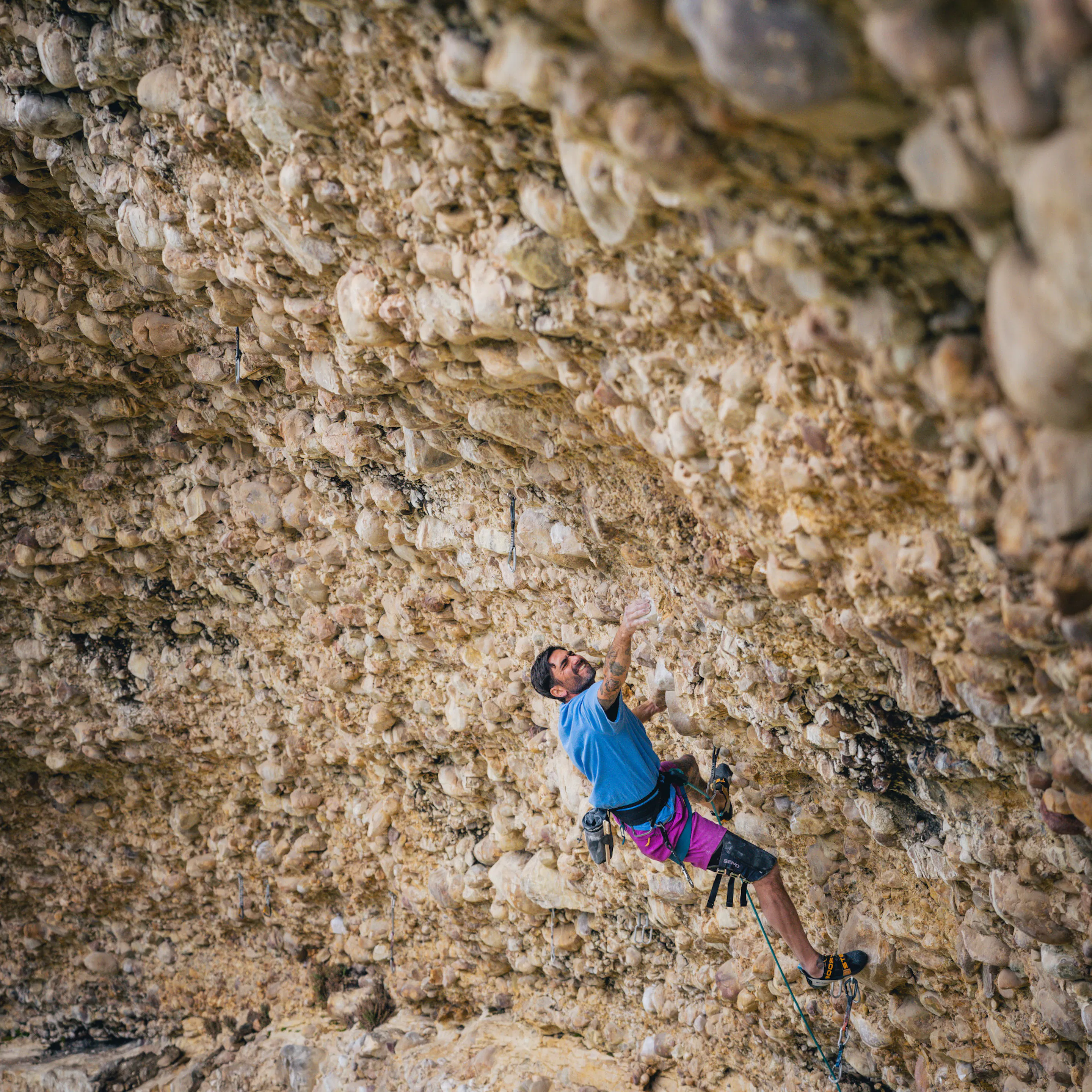
The Compound is my favorite sector. The climbing has a unique character, but it also has a different vibe overall, because it’s the highest crag in the canyon — perched up above the trees. You see and feel more of the whole landscape, often with wind swirling and birds soaring around. The routes are not terribly long and require more strength endurance than most of the other areas in Maple. It was the last area in the whole canyon to be developed, likely because it’s the furthest from the campground and hardest to access. Similarly, it was the last area to get re-bolted. The age and use were evident with rusted bolts, loose bolts and spinning hangers.
I didn’t have a relationship with any particular route, more the place as a whole. Additionally, I had always wondered about climbing on an upper panel of rock to top out the cave. Most of the central climbs in the cave stop at a midway break in the wall. It’s an obvious anchor point, but many of the climbs could have an extension or second pitch. I chose Cracker because it seemed the least likely to have a full no-hands rest above the original pitch, before the new climbing on the upper headwall. I was surprised by the quality of the rock and the quality of the movement.
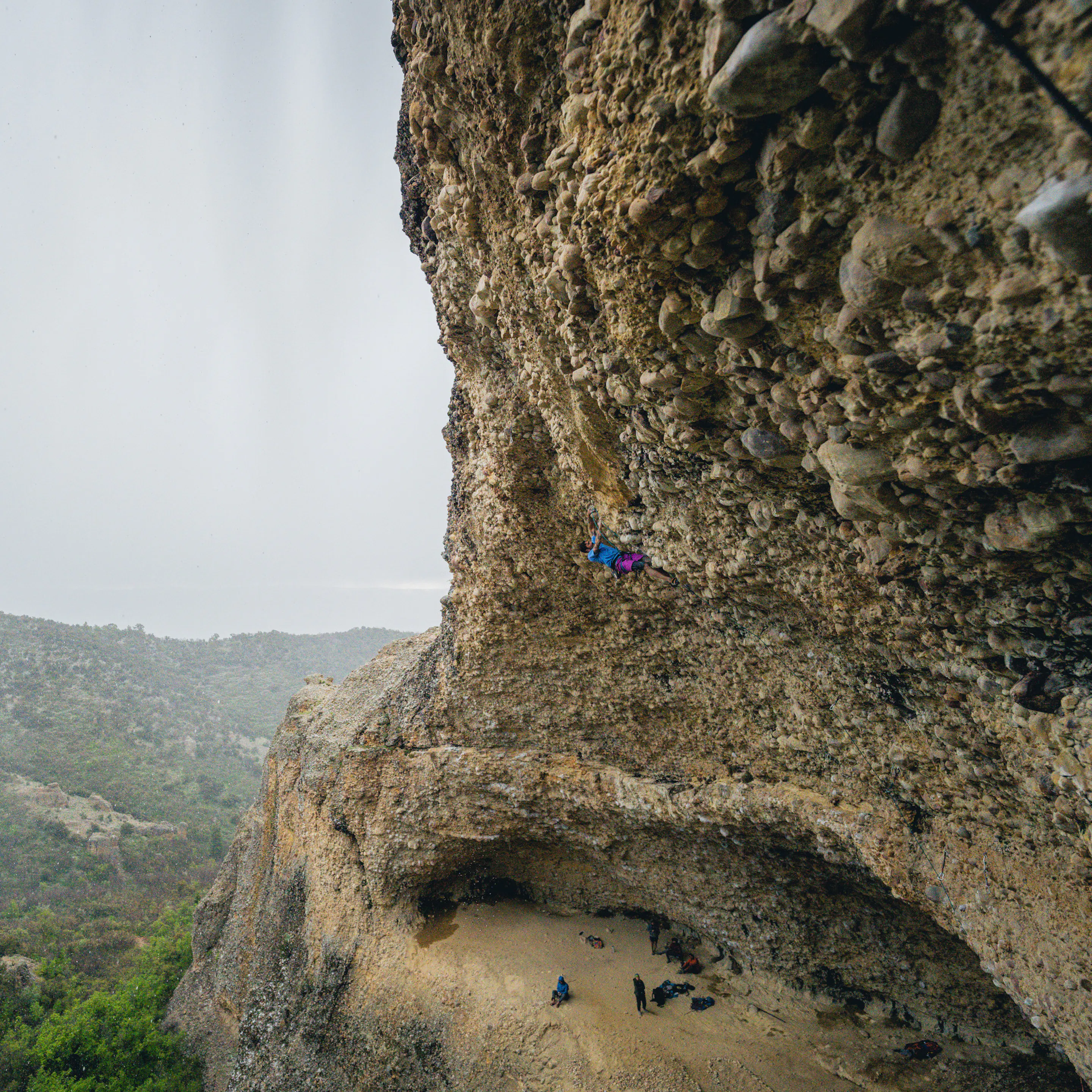
Sport Climbing Gear
Shop All